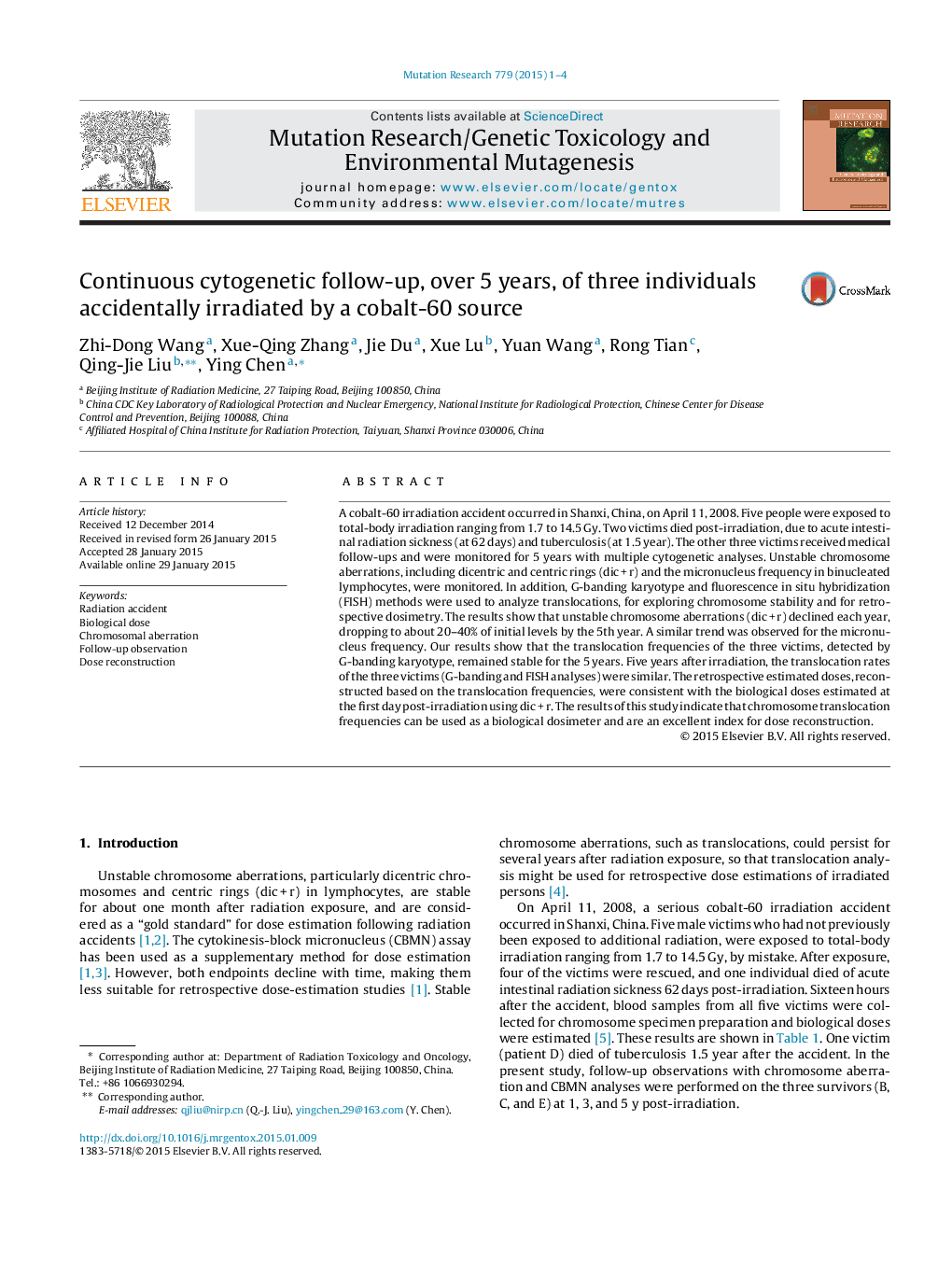| Article ID | Journal | Published Year | Pages | File Type |
|---|---|---|---|---|
| 2147869 | Mutation Research/Genetic Toxicology and Environmental Mutagenesis | 2015 | 4 Pages |
•This article is a follow-up study for three victims of a radiation accident.•Unstable chromosome aberrations and micronuclei frequency were detected for three victims.•Chromosome translocation was used for previous irradiation dose reconstruction.
A cobalt-60 irradiation accident occurred in Shanxi, China, on April 11, 2008. Five people were exposed to total-body irradiation ranging from 1.7 to 14.5 Gy. Two victims died post-irradiation, due to acute intestinal radiation sickness (at 62 days) and tuberculosis (at 1.5 year). The other three victims received medical follow-ups and were monitored for 5 years with multiple cytogenetic analyses. Unstable chromosome aberrations, including dicentric and centric rings (dic + r) and the micronucleus frequency in binucleated lymphocytes, were monitored. In addition, G-banding karyotype and fluorescence in situ hybridization (FISH) methods were used to analyze translocations, for exploring chromosome stability and for retrospective dosimetry. The results show that unstable chromosome aberrations (dic + r) declined each year, dropping to about 20–40% of initial levels by the 5th year. A similar trend was observed for the micronucleus frequency. Our results show that the translocation frequencies of the three victims, detected by G-banding karyotype, remained stable for the 5 years. Five years after irradiation, the translocation rates of the three victims (G-banding and FISH analyses) were similar. The retrospective estimated doses, reconstructed based on the translocation frequencies, were consistent with the biological doses estimated at the first day post-irradiation using dic + r. The results of this study indicate that chromosome translocation frequencies can be used as a biological dosimeter and are an excellent index for dose reconstruction.
